.png)
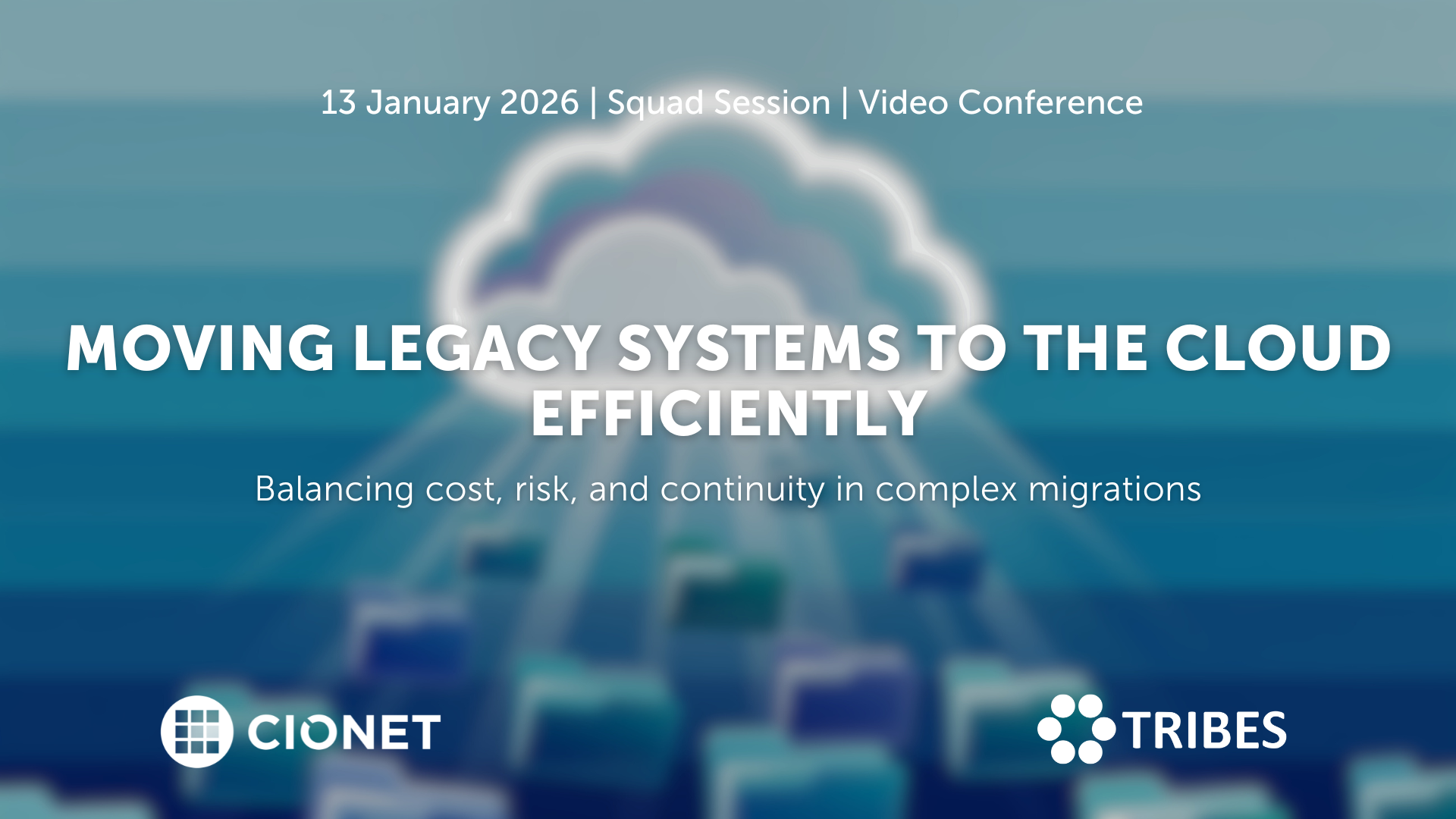
Belgium 13-1-26 Squad Only Virtual english
Migrating legacy systems to the cloud remains one of the toughest balancing acts in IT. Every choice affects stability, cost, and trust at once, and what starts as a modernisation effort quickly turns into a negotiation between ambition and reality. Suddenly budgets rise, dependencies appear late, and timelines tighten as old architectures collide with new expectations. In the end, success depends on sequencing, ownership, and aligning business priorities with infrastructure limits, and not only on technical readiness. Making it work requires more than a plan on paper. Knowing which systems genuinely belong in the cloud, which can wait, and which should stay put shapes the entire roadmap and defines its success. Each refactoring decision sets the level of future flexibility, but it also drives cost and risk. The trade-offs between speed, sustainability, and resilience only become clear once migration begins and pressure builds. Let’s discuss how to plan migrations that stay on track, manage hidden dependencies, and handle downtime with confidence. Let’s also discuss how governance, testing, and vendor coordination keep progress visible and credible. Are you in? A closed conversation for those who turn cloud migration from a disruption into a long-term advantage.
Read More.png)
Belgium 20-1-26 All Members Physical english
CIOs today are being judged less as technology leaders and more as portfolio managers. Every euro is under scrutiny. Boards and CFOs demand lower run costs, higher efficiency, and clear ROI from every digital initiative. Yet, they also expect CIOs to place bets on disruptive technologies that will keep the enterprise competitive in five years. This constant tension is redefining the role. In this session, we go beyond FinOps and cost reporting to tackle the strategic financial dilemmas CIOs face.
Read More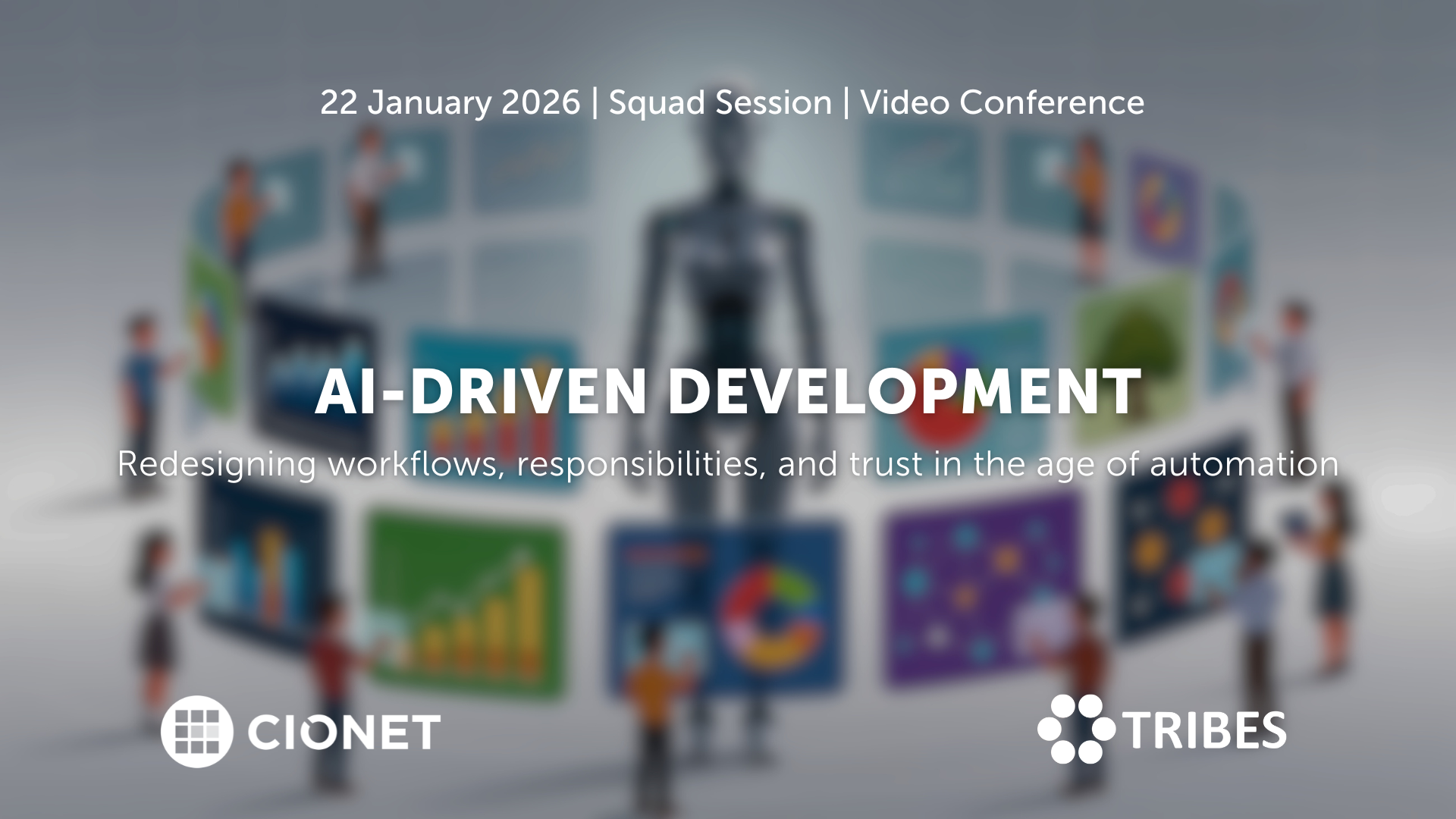
Belgium 22-1-26 Invitation Only Virtual english
AI coding assistants entered development teams quietly, but their impact grows by the day. What started as autocomplete now shapes architecture decisions, documentation, and testing. And when productivity gains are visible, so are new risks: security blind spots, uneven quality, and the slow erosion of shared standards. Teams move faster, but not always in the same direction. The challenge has become integration rather than adoption. And new questions have risen: how do you blend automation into established practices without losing oversight? When is human review still essential, and what should the rules of collaboration between developer and machine look like? As AI tools learn from proprietary code, where do responsibility and accountability sit? Let’s talk about how to redefine those workflows, balancing creativity with control, and protecting code quality in a hybrid human-AI environment. A closed conversation on where AI accelerates progress, where it introduces new debt, and how development culture must evolve to stay credible.
Read More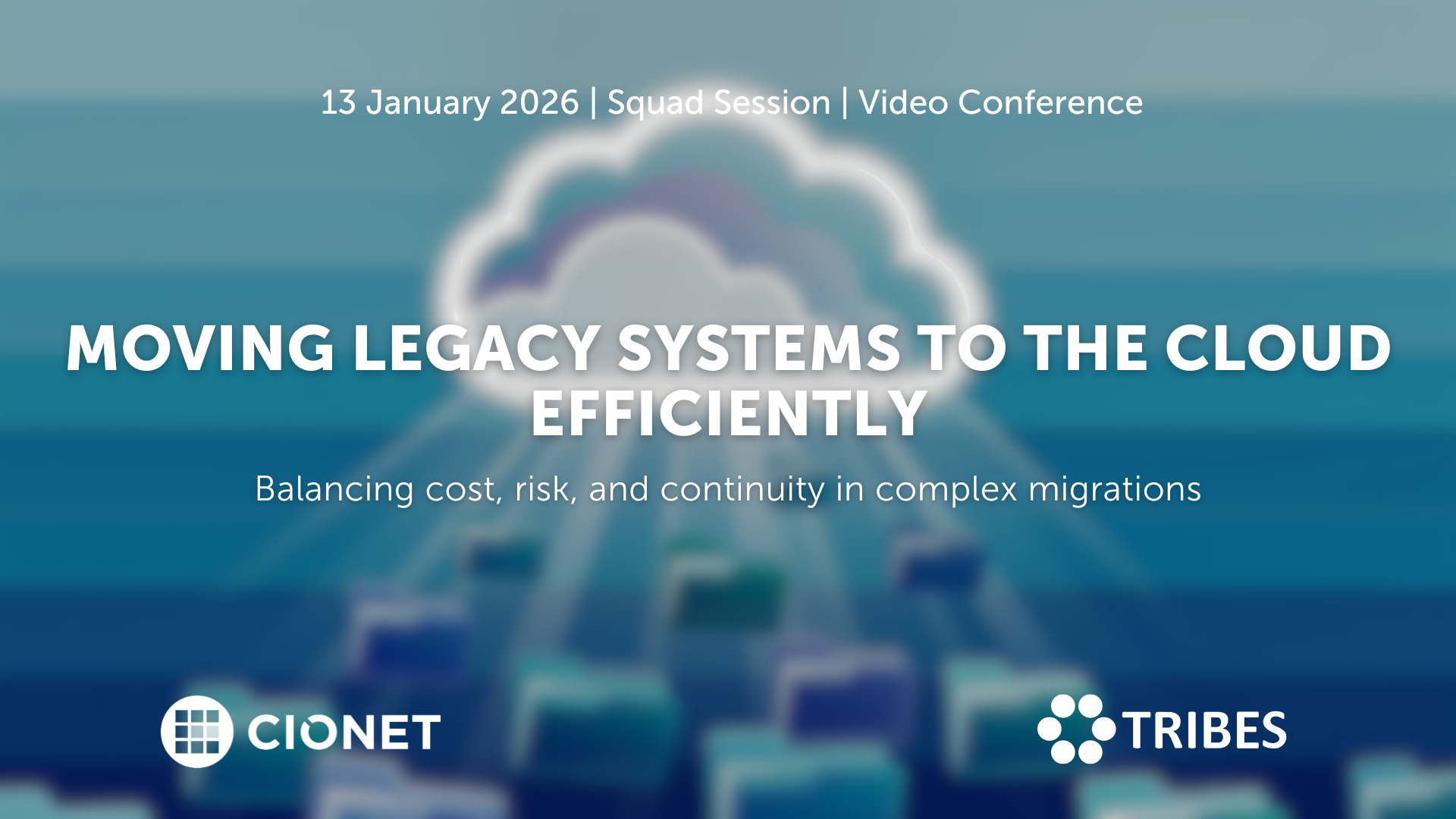
January 13, 2026 Squad Session Invitation Only Virtual english
Migrating legacy systems to the cloud remains one of the toughest balancing acts in IT. Every choice affects stability, cost, and trust at once, and what starts as a modernisation effort quickly turns into a negotiation between ambition and reality. Suddenly budgets rise, dependencies appear late, and timelines tighten as old architectures collide with new expectations. In the end, success depends on sequencing, ownership, and aligning business priorities with infrastructure limits, and not only on technical readiness. Making it work requires more than a plan on paper. Knowing which systems genuinely belong in the cloud, which can wait, and which should stay put shapes the entire roadmap and defines its success. Each refactoring decision sets the level of future flexibility, but it also drives cost and risk. The trade-offs between speed, sustainability, and resilience only become clear once migration begins and pressure builds. Let’s discuss how to plan migrations that stay on track, manage hidden dependencies, and handle downtime with confidence. Let’s also discuss how governance, testing, and vendor coordination keep progress visible and credible. Are you in? A closed conversation for those who turn cloud migration from a disruption into a long-term advantage.
Read More
January 22, 2026 Squad Session Invitation Only Virtual english
AI coding assistants entered development teams quietly, but their impact grows by the day. What started as autocomplete now shapes architecture decisions, documentation, and testing. And when productivity gains are visible, so are new risks: security blind spots, uneven quality, and the slow erosion of shared standards. Teams move faster, but not always in the same direction. The challenge has become integration rather than adoption. And new questions have risen: how do you blend automation into established practices without losing oversight? When is human review still essential, and what should the rules of collaboration between developer and machine look like? As AI tools learn from proprietary code, where do responsibility and accountability sit? Let’s talk about how to redefine those workflows, balancing creativity with control, and protecting code quality in a hybrid human-AI environment. A closed conversation on where AI accelerates progress, where it introduces new debt, and how development culture must evolve to stay credible.
Read More
January 27, 2026 Squad Session Invitation Only Physical english
Zero Trust sounds simple on paper: trust no one, verify everything. But once you start implementing it, the fun begins. Legacy systems, hybrid networks, and human habits don’t read the manual. The idea is solid; the execution, not so much.
Read More
CIONET Trailblazer: AI Transformation: Bridging the Cultural Divide to Achieve Competitive Advantage
Published on: December 17, 2025 @ 9:16 AM
Bridgestone EMIA is the regional Strategic Business Unit of Bridgestone Corporation, a global leader in tires and rubber. When its high-performance computing (HPC) infrastructure began to reach capacity during periods of peak usage, the company began looking into the potential of Microsoft Azure for HPC as a supplemental resource.
Virtual tire development itself is meant to enhance the product design process in terms of sustainability, efficiency, and flexibility. And coupling virtual development with Azure high-performance computing could be the perfect way to further enhance those benefits.Wolfgang De Salvador: R&D Coordinator for R&D Virtualization - Bridgestone EMIA
Bridgestone Europe, Russia, Middle East, India, and Africa (Bridgestone EMIA) is the regional Strategic Business Unit of Bridgestone Corporation, a global leader in tires and rubber, building on its expertise to provide solutions for safe and sustainable mobility.
Headquartered in Zaventem, Belgium, Bridgestone EMIA employs more than 20,000 people and conducts business in 40 countries across the region.
Bridgestone EMIA operates 15 tire plants, a major R&D center, and a proving ground, and it serves customers in an extensive retail network with thousands of touchpoints.
Each year, Bridgestone Corporation spends €780 million (over USD912 million) globally on research and development. As a key element of Bridgestone’s overall strategy, Bridgestone EMIA R&D is pursuing a digital transformation of its entire R&D operation by virtualizing its main processes. This entails intense use of simulations and data-driven, predictive models for virtual tire development, which can be very computationally intensive.
Bridgestone’s virtual tire development technology allows the company to design a digital tire, test it virtually, and fine-tune it before manufacturing prototypes or beginning physical testing. This allows Bridgestone to avoid creating approximately 200 prototype tires for each project, leading to a nearly 60 percent reduction in CO2 emissions and raw material requirements. For these purposes, access to high-performance computing (HPC) resources capable of running both implicit and explicit simulations is crucial.
Traditionally, Bridgestone has kept these resources on-premises, but this status quo might be about to change. The company’s Digital Engineering department, which is responsible for granting access to HPC resources, has begun testing the benefits of HPC in the cloud. “Virtual tire development itself is meant to enhance the product design process in terms of sustainability, efficiency, and flexibility,” says Wolfgang De Salvador, R&D Coordinator for R&D Virtualization at Bridgestone EMIA. “And coupling virtual development with Azure high-performance computing could be the perfect way to further enhance those benefits.”
The issues that the Digital Engineering department wants to solve are common. An on-premises HPC infrastructure requires sizeable upfront investment. This investment is an estimate of the company’s overall HPC needs, but as product design deadlines draw near, R&D usage spikes. If this usage exceeds the company’s HPC capacity, the result is a backlog of business-critical simulations. “We’re wary of the potential for product delays,” continues De Salvador, “and we don’t want to feel locked into a set maximum computing capacity. That’s why we’ve begun exploring the benefits of Microsoft Azure and how we might progressively hybridize our infrastructure and move operations into the cloud.”
If De Salvador’s reasons for exploring the benefits of HPC in the cloud sound familiar, it’s because they mirror the reasons most companies consider moving their on-premises infrastructures to the cloud. The difference, notes Luigi Lobello, IT Digital Innovation Leader at Bridgestone EMIA, is how “HPC multiplies the key drivers responsible for a move to the cloud.”
By progressively moving HPC workloads to Azure, especially during periods of high demand, Bridgestone EMIA is aiming to create a step-by-step cloud adoption strategy that marries the performance and scalability of the cloud with an increased return on investment for its existing on-premises infrastructure. “We want to preserve business continuity while progressively embracing the cloud,” adds Paolo Filetti, Head of Digital Engineering at Bridgestone EMIA. “When the scalability of the cloud is required, we want employees to be able to switch over to that hardware with as little disruption as possible.”
While researching the options available to them, the Bridgestone EMIA team noted the strong development and support of HPC solutions at Microsoft. The team initiated a proof of concept (POC) with the hope of meeting multiple criteria. During peak usage hours, Azure for HPC resources would need to be provisioned on demand. These resources would also need to be automatically decommissioned as demand returned to normal. Additionally, these transitions would need to be highly secure by design and completed transparently for any users. “We expected a performance hit when running HPC workloads in the cloud,” says De Salvador. “We would have been satisfied if the POC had a less than 20 percent performance reduction, but our results in Azure were far better than that. They matched performance of our on-premises infrastructure.”
To achieve these results, Bridgestone EMIA tested a number of different Azure virtual machines (VMs) and VM configurations. “For some simulations in which we benefit from having a large number of cores on a single VM, Azure machines like the HBv3-series work well for us,” says De Salvador. “And if the needs of a researcher who’s running simulations on a single machine change, we can quickly and easily switch to an array of high-throughput, low-latency VMs running InfiniBand.”
As Bridgestone EMIA kicked off its HPC on Azure POC, H-series VMs quickly came into focus based on their ability to use InfiniBand. Ultimately, 90 percent of the simulations that the company ran during the POC used the technology, with the other 10 percent being conducted on individual H-series machines. After a minimal amount of initial setup, the POC proceeded at a rapid pace. Immediately, the POC team noted how the addition of Azure VMs improved their ability to adjust the dimensions of a given simulation on the fly. No longer would a fixed number of cores need to be pre-provisioned for each simulation. Instead, each simulation’s computational needs could dictate its hardware allocation.
“What was really impressive to me was how minimal the configuration burden was, regarding out-of-the-box HPC on Azure,” says De Salvador. “With only a few adjustments to the operating system configuration files, we’ve been able to move our simulations to InfiniBand interconnected VMs in Azure. In the same way, developing our ad-hoc scheduler bursting integration has been straightforward because our HPC expertise was easily translatable to Azure services.”
As the planning stages of a potential HPC migration to Azure progress, Bridgestone EMIA has also begun examining the benefits of Azure CycleCloud. “The autoscaling capabilities of Azure CycleCloud are going to be very useful as our blending of on-premises and cloud infrastructure changes over time,” says De Salvador. “Many commercial and open-source schedulers, including those we use, are available out of the box with Azure CycleCloud. That openness of design has made our cloud migration plans very simple.”
Bart Kerkhofs, Vice President of IT for Bridgestone EMIA, sees the addition of Azure for HPC VMs to his department’s options as a step toward something fundamentally new. “From an IT perspective, our goal in adopting Azure for HPC and other new technologies is to create a digital playground,” says Kerkhofs. “That digital playground will be at once scalable, agile, highly secure, and sustainable—and in that ecosystem, Bridgestone employees will be able to freely and easily collaborate on and co-create our best new ideas.”
Put together, the results of Bridgestone’s POC point toward a potent future state for the company. “The main benefit of HPC on Azure is how seamlessly you can put out-of-the-box VMs into service to supplement on-premises infrastructure,” says De Salvador. “The same can be said about running Linux for HPC applications on Azure using CycleCloud and how well the available Linux images support HPC technologies like InfiniBand on Azure. It’s almost as if we have infinitely scalable on-premises infrastructure, but without the traditional costs and maintenance responsibilities.”
By removing the potential for backlog in the R&D process and increasing the company’s overall computing capacity on demand, the Digital Engineering department can guarantee a high level of service to its in-house customers and maintain the company’s competitive edge. Bridgestone also sees Azure as a way to reduce its reliance on a persistent cycle of on-premises hardware refreshes further down the line. “We can have constant access to the latest and newest hardware,” says De Salvador. “Each time we move a simulation to the cloud, we have the opportunity to opt for the newest, most powerful VMs available—the benefits of which can be transferred downstream to our customers through reduced time to market.”
Bridgestone’s existing HPC infrastructure also benefits in terms of sustainability, as does the potential agility of the company as a whole. Resources can quickly and transparently be provisioned in the cloud when the R&D department needs them, and they can be decommissioned when they’re no longer required, reducing operating costs. This on-demand usage allows Bridgestone EMIA to maximize overall resource usage through sharing, which helps minimize the environmental impact of R&D operations.
“We’re by definition a multicloud environment at Bridgestone,” says Kerkhofs. “In practice, however, our collaboration with Microsoft has often led to the co-creation of fantastic solutions like the one we’re developing for our HPC workloads. That kind of close relationship is part of why, within our regular cycle of on-premises hardware replacement, we’re exploring how to migrate more workloads to Azure.”
Find out more about Bridgestone EMIA on LinkedIn, Facebook, YouTube, and Instagram.
Our collaboration with Microsoft has often led to the co-creation of fantastic solutions like the one we’re developing for our HPC workloads. That kind of close relationship is part of why, within our regular cycle of on-premises hardware replacement, we’re exploring how to migrate more workloads to Azure.Bart Kerkhofs: Vice President of IT - Bridgestone EMIA
243 Views 2 Likes Read More

Digital Transformation is redefining the future of health care and health delivery. All stakeholders are convinced that these innovations will create value for patients, healthcare practitioners, hospitals, and governments along the patient pathway. The benefits are starting from prevention and awareness to diagnosis, treatment, short- and long-term follow-up, and ultimately survival. But how do you make sure that your working towards an architecturally sound, secure and interoperable health IT ecosystem for your hospital and avoid implementing a hodgepodge of spot solutions? How does your IT department work together with the other stakeholders, such as the doctors and other healthcare practitioners, Life Sciences companies, Tech companies, regulators and your internal governance and administrative bodies?
Read More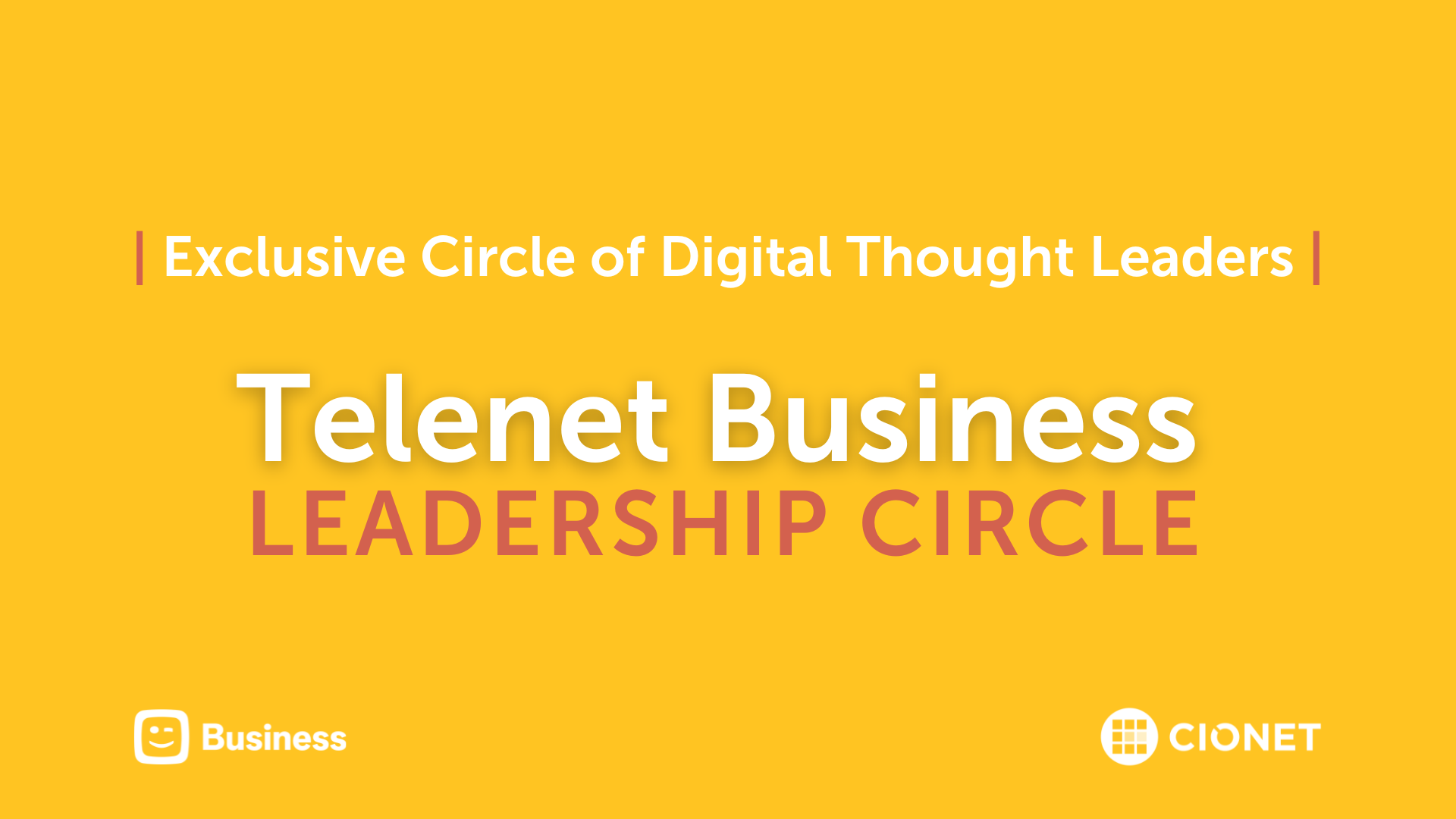
The Telenet Business Leadership Circle powered by CIONET, offers a platform where IT executives and thought leaders can meet to inspire each other and share best practices. We want to be a facilitator who helps you optimise the performance of your IT function and your business by embracing the endless opportunities that digital change brings.
Read More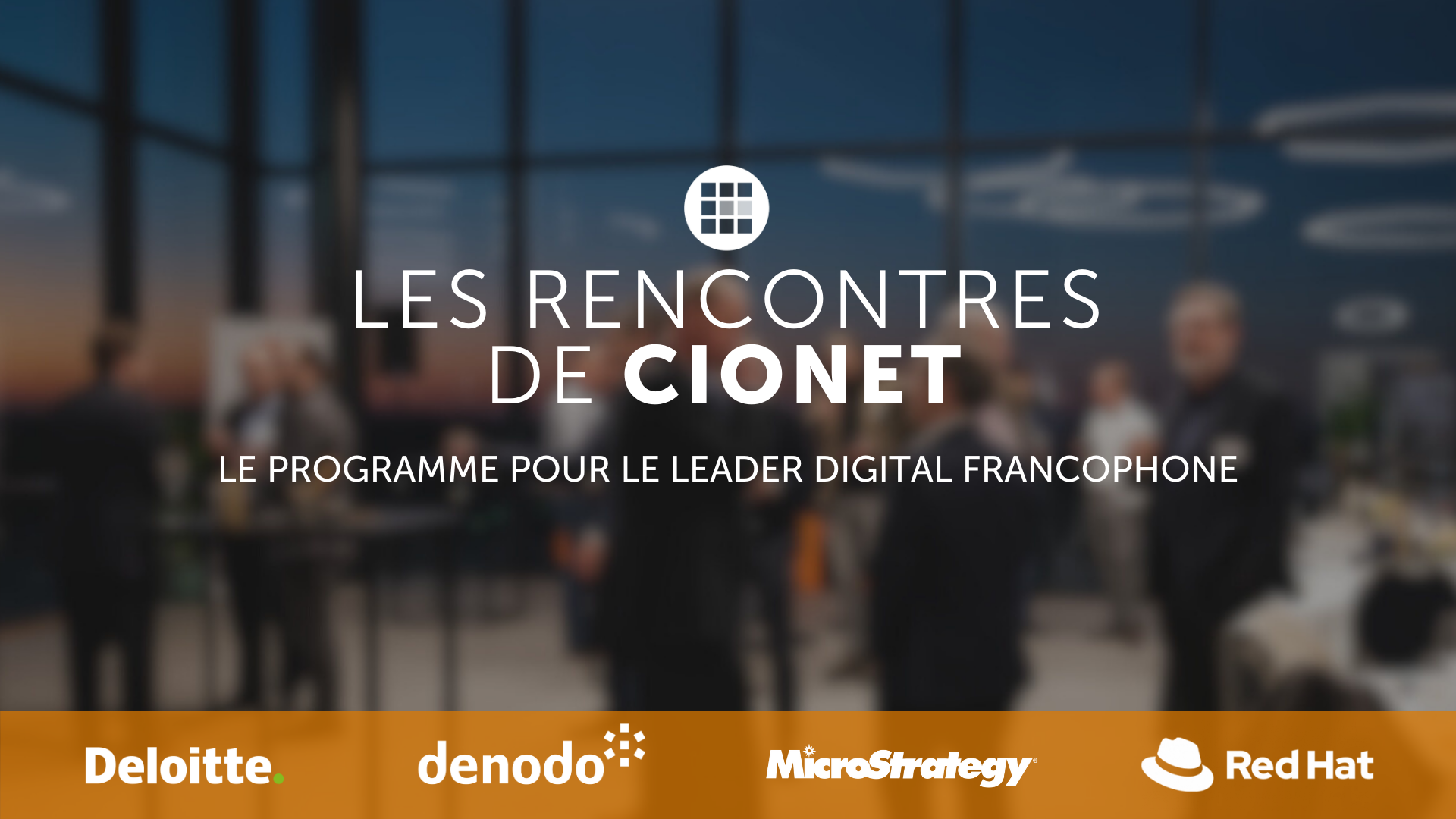
Découvrez la dynamique du leadership numérique aux Rencontres de CIONET, le programme francophone exclusif de CIONET pour les leaders numériques en Belgique, rendu possible grâce au soutien et à l'engagement de nos partenaires de programme : Deloitte, Denodo et Red Hat. Rejoignez trois événements inspirants par an à Liège, Namur et en Brabant Wallon, où des CIOs et des experts numériques francophones de premier plan partagent leurs perspectives et expériences sur des thèmes d'affaires et de IT actuels. Laissez-vous inspirer et apprenez des meilleurs du secteur lors de sessions captivantes conçues spécialement pour soutenir et enrichir votre rôle en tant que CIO pair. Ne manquez pas cette opportunité de faire partie d'un réseau exceptionnel d'innovateurs numériques !
Read More
CIONET is committed to highlighting and celebrating female role models in IT, Tech & Digital, creating a leadership programme that empowers and elevates women within the tech industry. This initiative is dedicated to showcasing the achievements and successes of leading women, fostering an environment where female role models are recognised, and their contributions can ignite progress and inspire the next generation of women in IT. Our mission is to shine the spotlight a little brighter on female role models in IT, Tech & Digital, and to empower each other through this inner network community.
Read More


-Apr-01-2022-10-58-34-57-AM.png)











-Dec-13-2023-10-53-15-5032-AM.png)




-Jun-12-2023-01-23-11-7540-PM.png)





-Apr-01-2022-10-58-34-68-AM.png)










-2.jpg)




-Sep-01-2022-02-47-55-60-PM.png)
-Nov-22-2023-08-56-42-6802-AM.png)
.png)

Would you like to know more about CIONET Belgium, membership or partnership opportunities? Do you have feedback or any other question? Send us a message!
You can either send us a registered handwritten letter explaining why you'd like to become a member or you can simply talk to us right here!